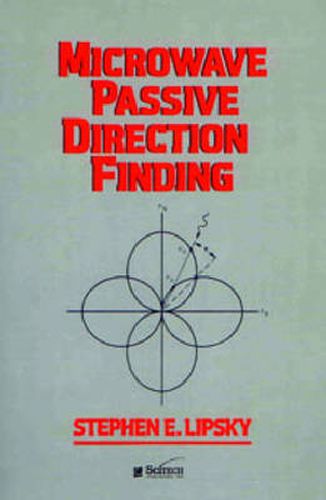Readings Newsletter
Become a Readings Member to make your shopping experience even easier.
Sign in or sign up for free!
You’re not far away from qualifying for FREE standard shipping within Australia
You’ve qualified for FREE standard shipping within Australia
The cart is loading…






Microwave Passive Direction Finding unifies direction finding (DF) theory and brings together into a single source wide-ranging information on the technology of measuring the direction-of-arrival of microwave signals. Throughout the material, there is authoritative information useful to preparing a detailed technical proposal for new business that has been compiled from many years of defense industry presentations, reports, and systems development. Diagrams and photographs of state-of-the-art equipment depict the methods discussed, and equations and charts facilitate a hands-on approach to calculating system performance. The book also presents rarely published systems concepts, such as digital preprocessing, supercommutation, and wide RF bandwidth signal detection methods. Specific sections cover evolution and use of monopulse passive DF receiver theory, design of antenna elements for conformal DF coverage, receiver configurations, DF antenna arrays, interferometer DF techniques, computation methods for signal detection, probability of detection, accuracy of DF systems, and signal processing and display methods. More than any book on this technology, Microwave Passive Direction Finding anticipates the questions that arise in the DF design process. The chapters are organized to stand alone, making the book useful as a text/reference for the practicing engineer. At the same time, the material is organized inductively, so that it can be used for a college or seminar text.
$9.00 standard shipping within Australia
FREE standard shipping within Australia for orders over $100.00
Express & International shipping calculated at checkout
Microwave Passive Direction Finding unifies direction finding (DF) theory and brings together into a single source wide-ranging information on the technology of measuring the direction-of-arrival of microwave signals. Throughout the material, there is authoritative information useful to preparing a detailed technical proposal for new business that has been compiled from many years of defense industry presentations, reports, and systems development. Diagrams and photographs of state-of-the-art equipment depict the methods discussed, and equations and charts facilitate a hands-on approach to calculating system performance. The book also presents rarely published systems concepts, such as digital preprocessing, supercommutation, and wide RF bandwidth signal detection methods. Specific sections cover evolution and use of monopulse passive DF receiver theory, design of antenna elements for conformal DF coverage, receiver configurations, DF antenna arrays, interferometer DF techniques, computation methods for signal detection, probability of detection, accuracy of DF systems, and signal processing and display methods. More than any book on this technology, Microwave Passive Direction Finding anticipates the questions that arise in the DF design process. The chapters are organized to stand alone, making the book useful as a text/reference for the practicing engineer. At the same time, the material is organized inductively, so that it can be used for a college or seminar text.